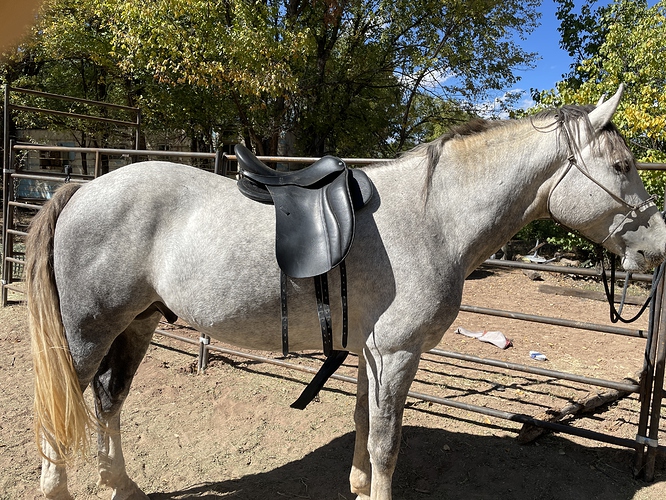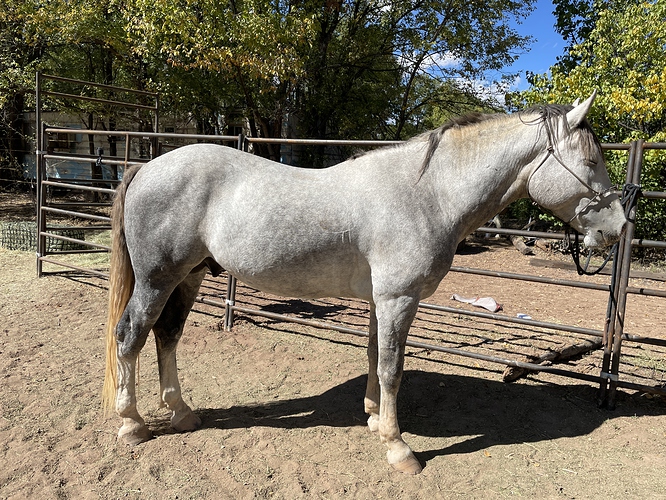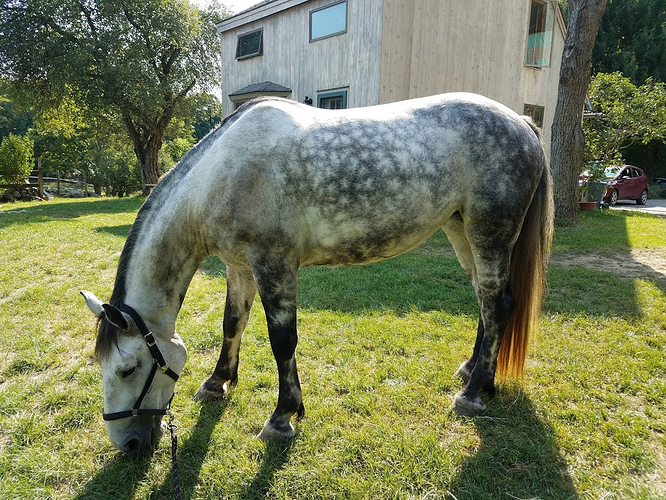I have a 4yo Irish Draught colt that I’ve been slowly bringing along under saddle. He’s only getting ridden once a week or so just to maintain his domestication. But next year he’ll be 5, and we should start getting on with more hacking out and probably rides that are longer than the 20 minutes we do now. So I’d like to get something more comfortable for both of us than the close contact saddle we use now.
The trapizus behind his wither where you often see those hollows on TB’s are huge. Like there’s a dip at his spine between them that could hold water. That’s a stallion thing, right? I’ve ridden/groomed/worked around probably a dozen WB stallions and a couple of Iberians and QH’s and while I haven’t noticed this specific characteristic on any of the their backs I wasn’t responsible for fitting their saddles.
He’s also got a laid back shoulder and forward girth groove and a rather short back so we’re going to have LOADS of fun with this.
I’m currently trying one of those Natural Balance saddles with the discs and panels and such and while he seems to appreciate the freedom on his shoulder the back wags when I lunge him in it.
So I put on our jump saddle and lunged him and the back of it wags a bit too. It’s like as his muscles move it’s twisting the saddle. What do you even do with that? How do we fit a static saddle to a moving back? These saddles don’t seem to be too narrow when he’s standing. His back is rather A shaped so I didn’t think a hoop tree would be necessary. Are there “stallion” trees or is my boy just freaky?

 people are so funny about stallions. No, it’s not a stallion thing but can be an overweight thing. It’s also possible with pulling breeds/those with heavy influence from pulling types, such as the ID, can be a bit more naturally developed in their front ends. Or just chunky.
people are so funny about stallions. No, it’s not a stallion thing but can be an overweight thing. It’s also possible with pulling breeds/those with heavy influence from pulling types, such as the ID, can be a bit more naturally developed in their front ends. Or just chunky.



